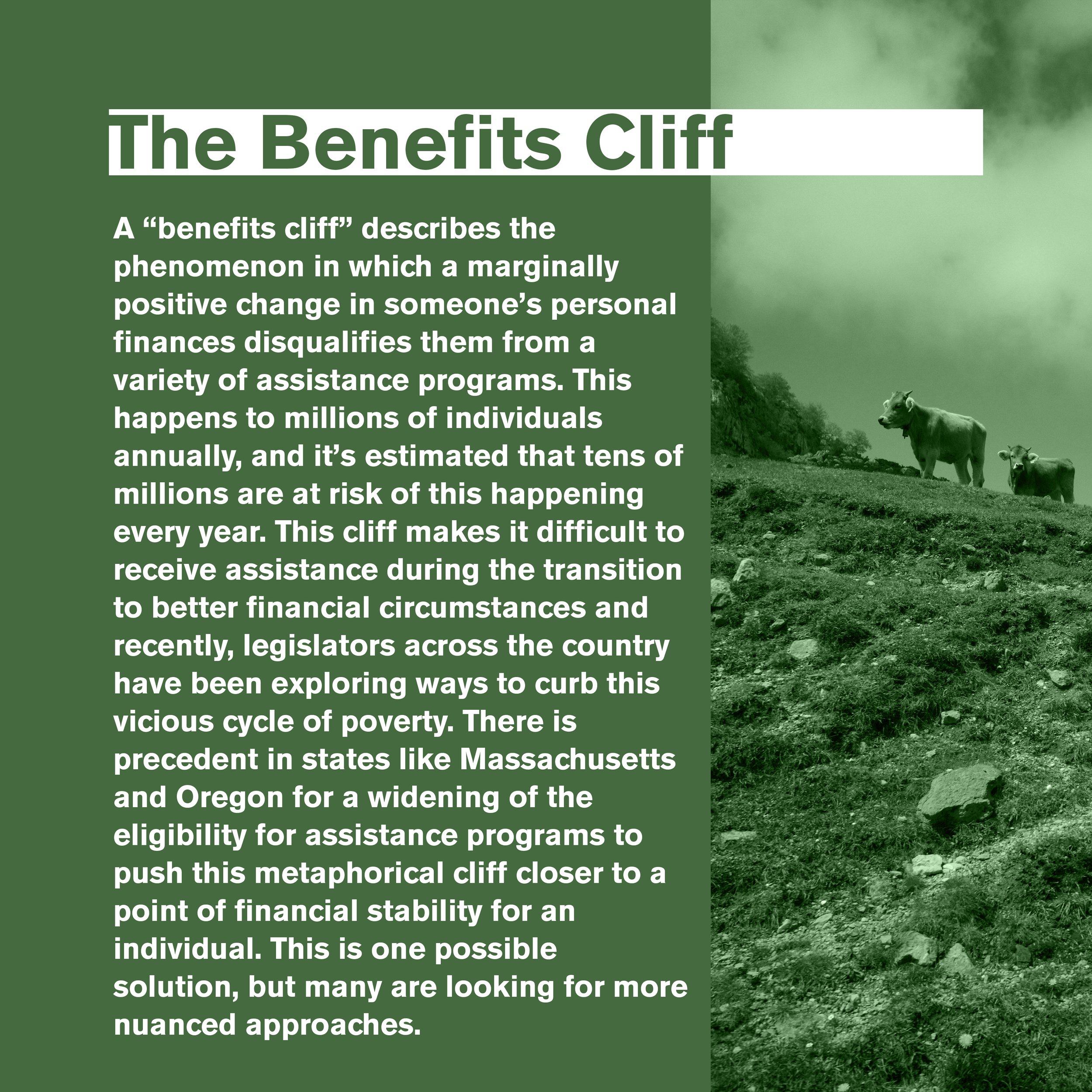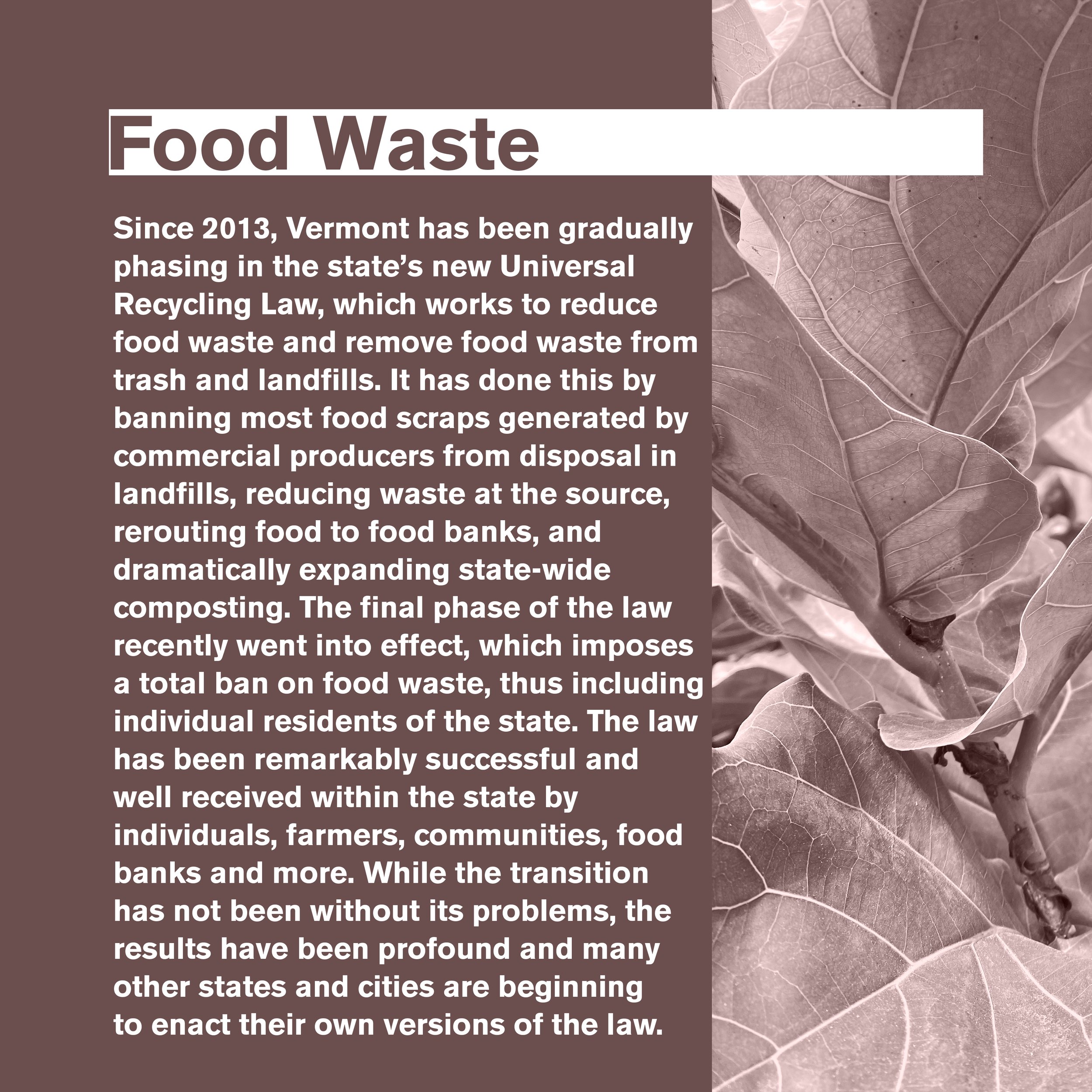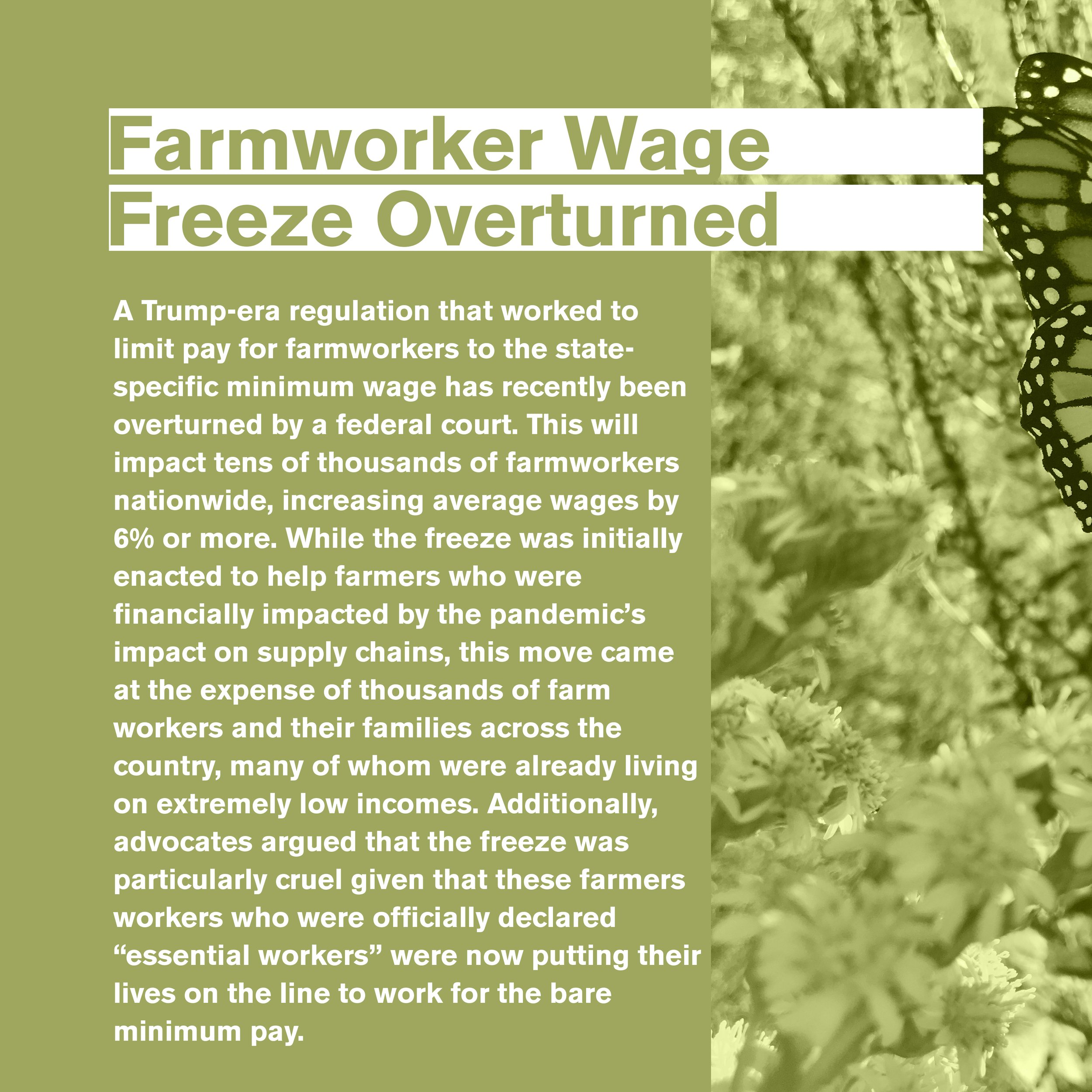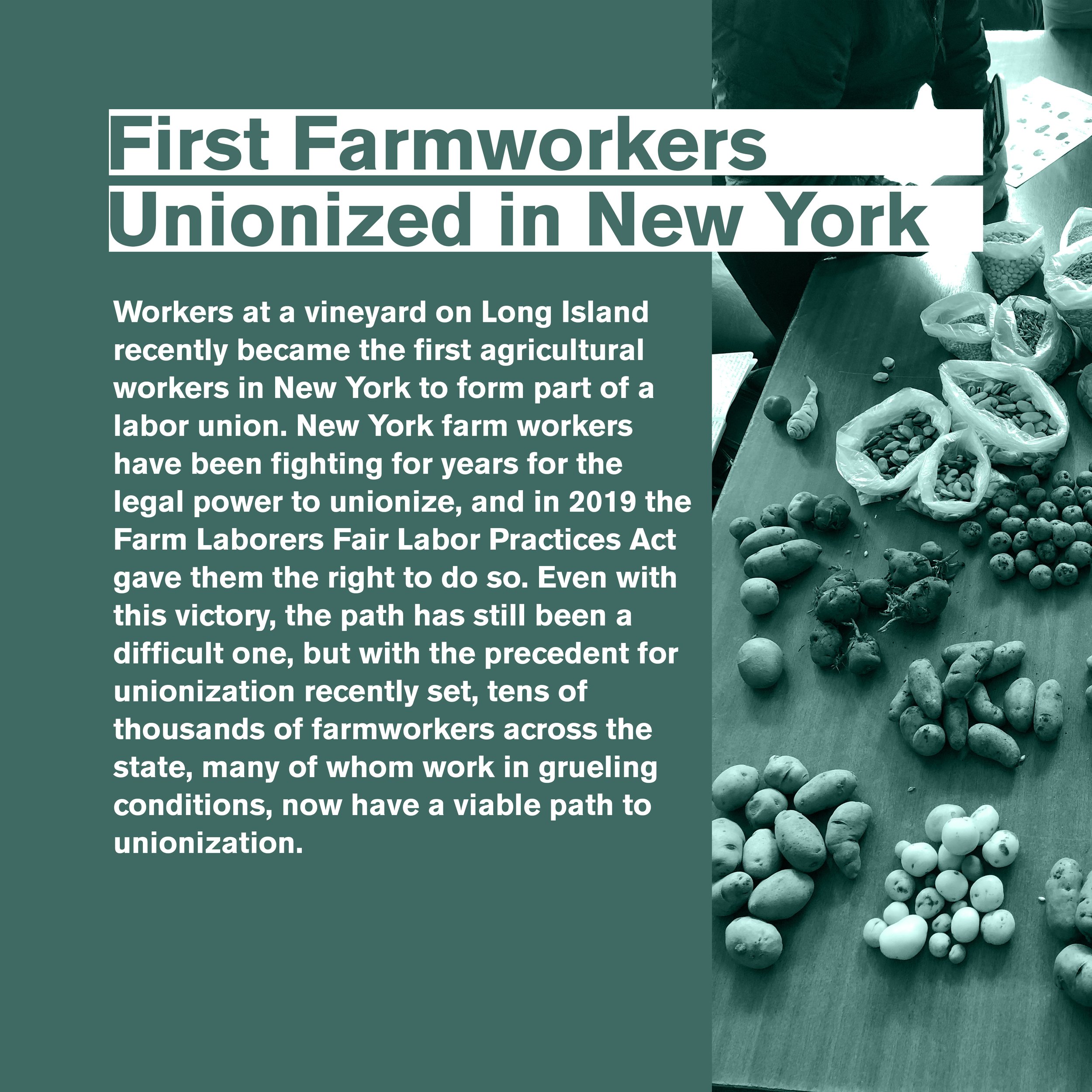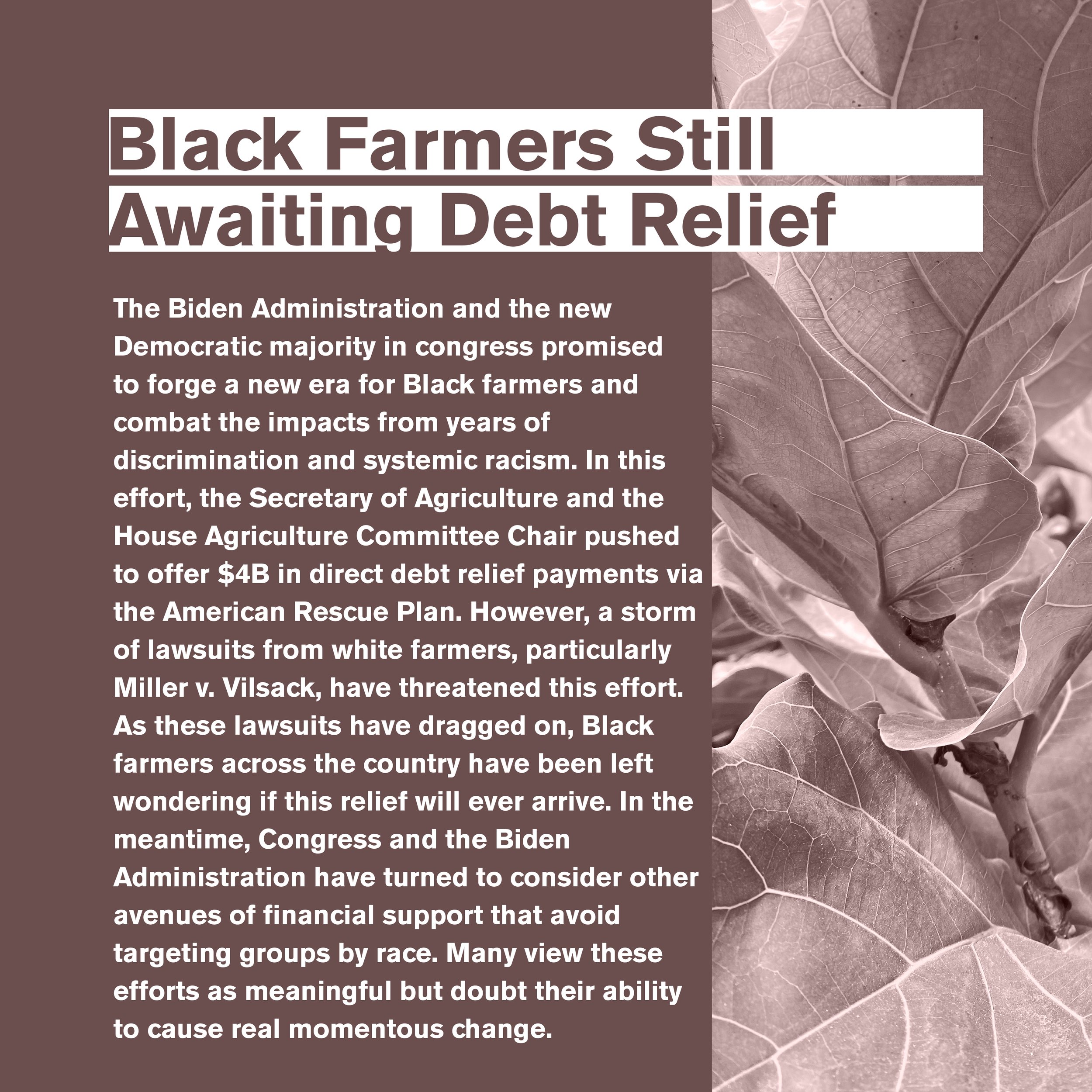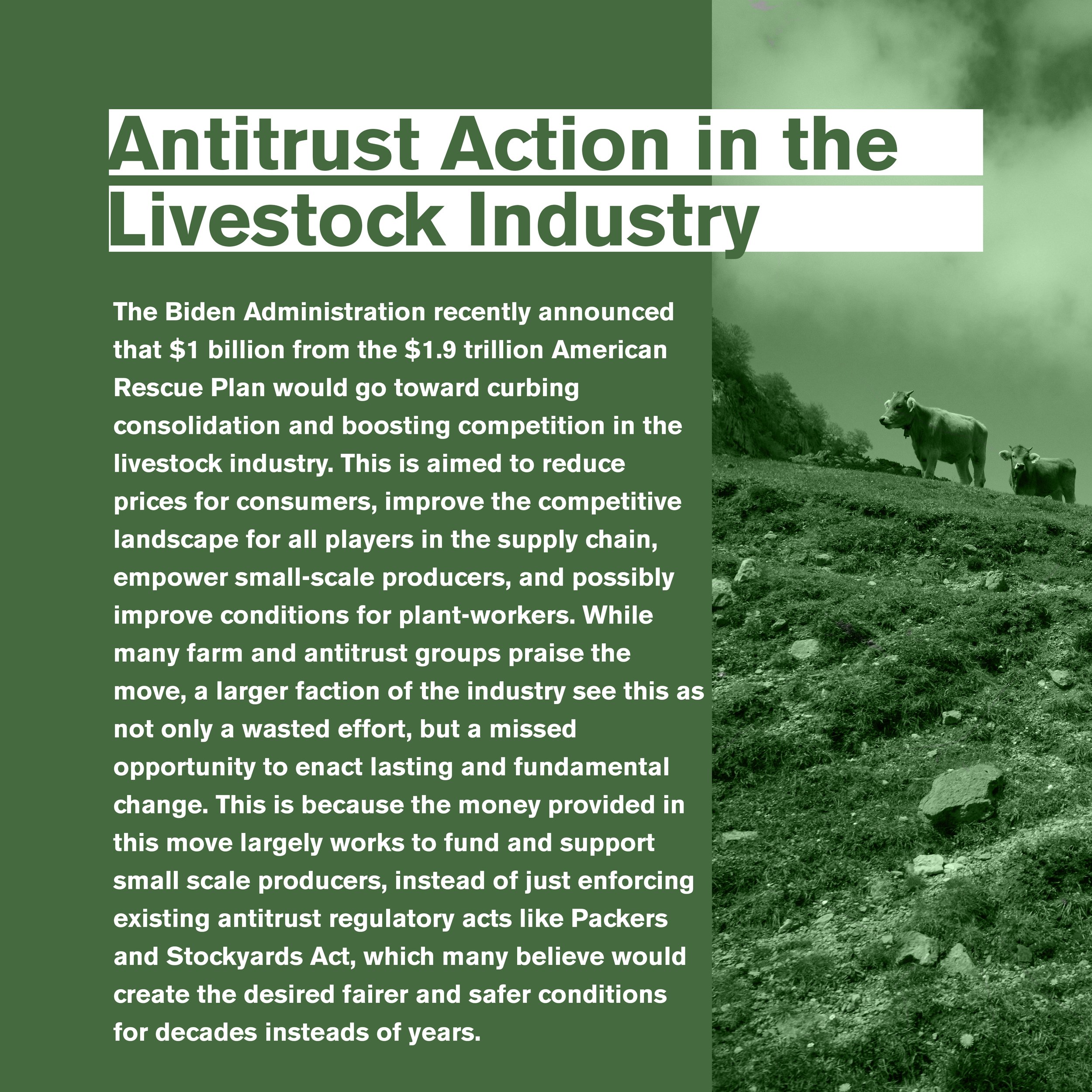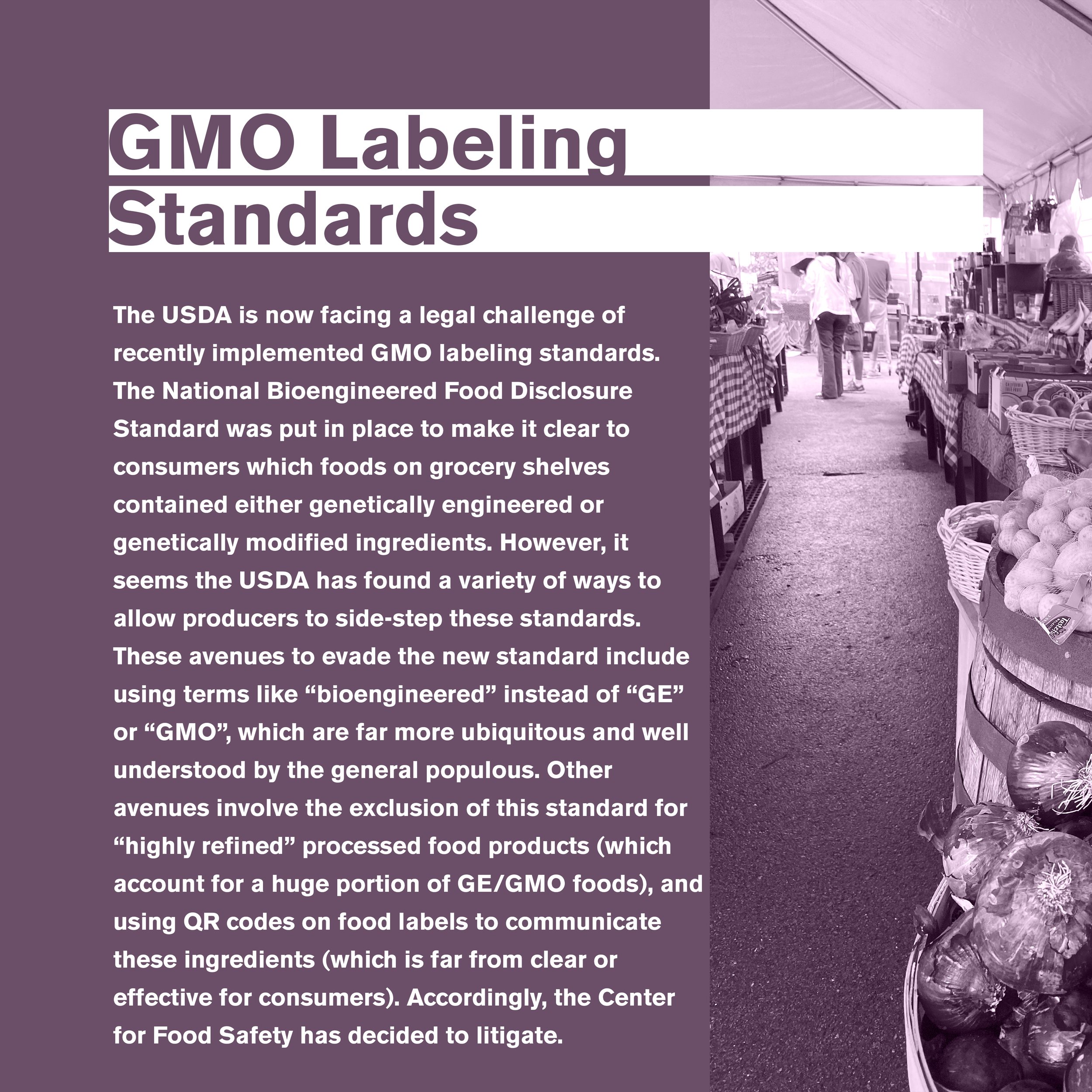Winter 2022 Policy Updates
Back in July we rounded up a lot of the issues in food and agriculture policy that we thought were relevant and we found it was a great way to gather our thoughts around food policy and make things a little more “digestible.” We did it again in March, April, and May, and now we’re back with some winter updates.
The “Benefits Cliff”
Depending on a variety of factors in your life (income, number of people in your household, etc.), you may be eligible for assistance including housing and childcare subsidies, tax credits, Medicaid, SNAP and WIC benefits for food, and more. A “benefits cliff” describes the phenomenon in which a marginally positive change in someone’s personal finances (often as little as a raise of a few cents an hour) disqualifies them from these assistance programs. This happens to millions of individuals annually, and it’s estimated that tens of millions are at risk of this happening every year.
This cliff makes it difficult to receive assistance during the transition to better financial circumstances and recently, legislators across the country have been exploring ways to curb this vicious cycle of poverty. There is precedent in states like Massachusetts and Oregon for a widening of the eligibility for assistance programs to push this metaphorical cliff closer to a point of financial stability for an individual. This is one possible solution,but many are looking for more nuanced approaches. Some of these include a tapering of assistance as an individual’s earnings increase, as well as a variety of new bills which would work to simplify and streamline the enrollment in these programs for individuals and remove a variety of penalties related to financial progress.
Food Waste
Since 2013, Vermont has been gradually phasing in the state’s new Universal Recycling Law, which works to reduce food waste and remove food waste from trash and landfills. It has done this by banning most food scraps generated by commercial producers from disposal in landfills, reducing waste at the source, rerouting food to food banks, and dramatically expanding state-wide composting. The final phase of the law recently went into effect, which imposes a total ban on food waste, thus including individual residents of the state.
The law has been remarkably successful and well received within the state by individuals, farmers, communities, food banks and more. While the transition has not been without its problems, food waste in landfills has plummeted, donations to food banks has skyrocketed, and there’s been a roughly 32% increase in people who compost at home across the state. Similar laws are currently being adopted and phased in in places like Seattle, San Francisco, Boulder, and possibly in the future, the entire state of California.
Farmworker Wage Freeze Overturned
A Trump-era regulation that worked to limit pay for farmworkers to the state-specific minimum wage has recently been overturned by a federal court. This will impact tens of thousands of farmworkers nationwide, increasing average wages by 6% or more. While the freeze was initially enacted to help farmers who were financially impacted by the pandemic’s impact on supply chains, this move came at the expense of thousands of farm workers and their families across the country, many of whom were already living on extremely low incomes. Additionally, advocates argued that the freeze was particularly cruel given that these farmers workers who were officially declared “essential workers” were now putting their lives on the line to work for the bare minimum pay.
First Farmworker Union in New York
Workers at a vineyard on Long Island recently became the first agricultural workers in New York to form part of a labor union. New York farm workers have been fighting for years for the legal power to unionize, and in 2019 the Farm Laborers Fair Labor Practices Act gave them the right to do so. Even with this victory, the path has still been a difficult one, but with the precedent for unionization recently set, tens of thousands of farmworkers across the state, many of whom work in grueling conditions, now have a viable path to unionization.
Black Farmers Still Awaiting Debt Relief
The Biden Administration and the new Democratic majority in congress promised to forge a new era for Black farmers and combat the impacts from years of discrimination and systemic racism. In this effort, the Secretary of Agriculture and the House Agriculture Committee Chair pushed to offer $4B in direct debt relief payments via the American Rescue Plan. However, a storm of lawsuits from white farmers, particularly Miller v. Vilsack, have threatened this effort.
As these lawsuits have dragged on, Black farmers across the country have been left wondering if this relief will ever arrive. In the meantime, Congress and the Biden Administration have turned to consider other avenues of financial support that avoid targeting groups by race. Many view these efforts as meaningful but doubt their ability to cause real momentous change.
American Rescue Plan: Curbing Consolidation in the Livestock Industry
The Biden Administration recently announced that $1 billion from the $1.9 trillion American Rescue Plan would go toward curbing consolidation and boosting competition in the livestock industry. This is aimed to reduce prices for consumers, improve the competitive landscape for all players in the supply chain, empower small-scale producers, and possibly improve conditions for plant-workers.
While many farm and antitrust groups praise the move, a larger faction of the industry see this as not only a wasted effort, but a missed opportunity to enact lasting and fundamental change. This is because the money provided in this move largely works to fund and support small scale producers, instead of just enforcing existing antitrust regulatory acts like Packers and Stockyards Act, which many believe would create the desired fairer and safer conditions for decades insteads of years.
GMO Labeling Standards
The USDA is now facing a legal challenge of recently implemented GMO labeling standards. The National Bioengineered Food Disclosure Standard was put in place to make it clear to consumers which foods on grocery shelves contained either genetically engineered or genetically modified ingredients. However, it seems the USDA has found a variety of ways to allow producers to side-step these standards.
These avenues to evade the new standard include using terms like “bioengineered” instead of “GE” (genetically engineered) or “GMO” (genetically modified organisms), which are far more ubiquitous and well understood by the general populous. Other avenues involve the exclusion of this standard for “highly refined” processed food products (which account for a huge portion of GE/GMO foods), and using QR codes on food labels to communicate these ingredients (which is far from clear or effective for consumers). Accordingly, the Center for Food Safety has decided to litigate.

